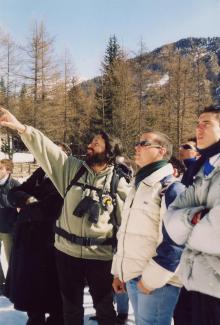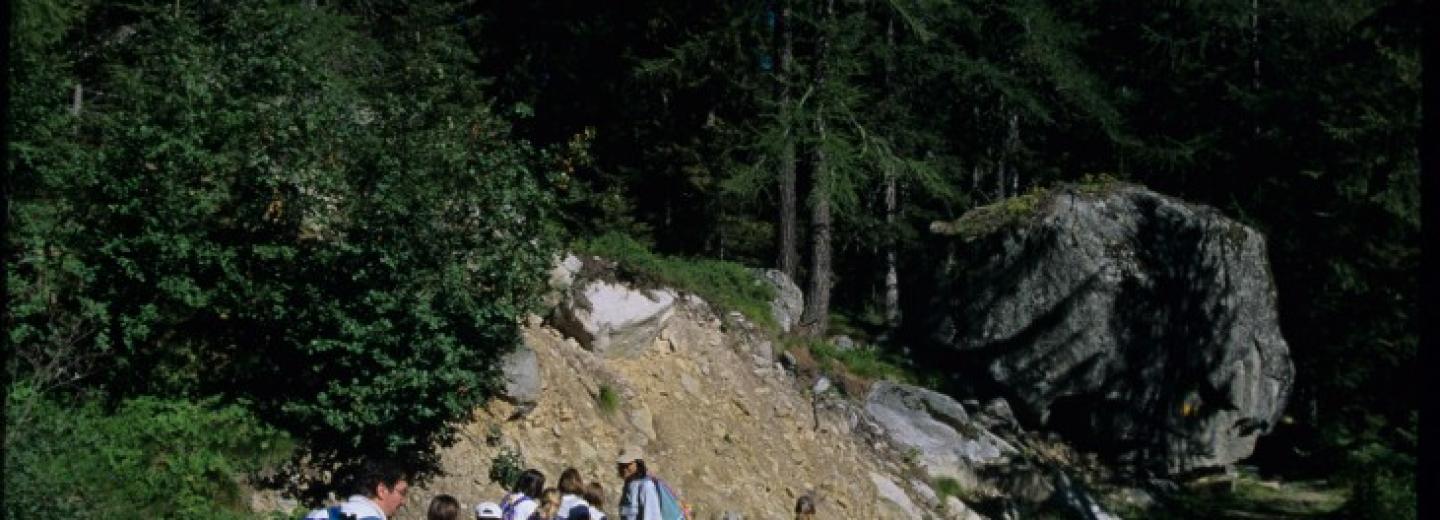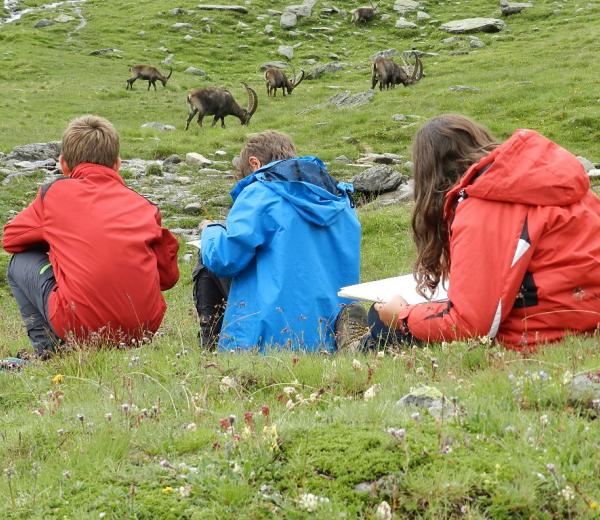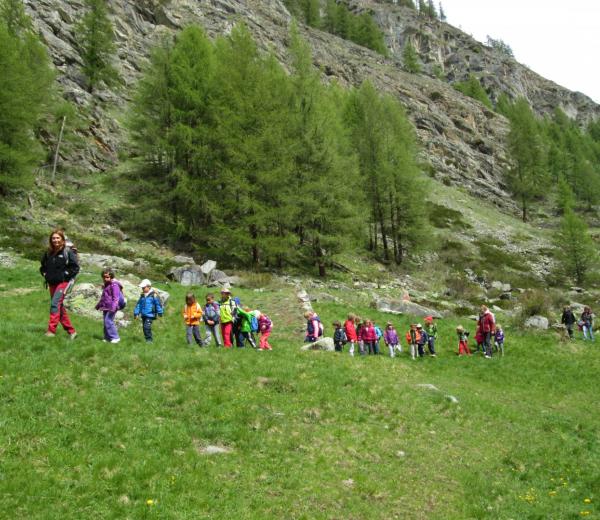
The Park Interpreters present a privileged way of establishing a more careful relationship with Nature.
Whether you simply want to relax with a short walk, or if you are looking for the excitement of great traverses, or if you are interested in more specific features of the land, every chance is appropriate to ask for expert guidance!
Among the main activities are:
1. Excursions of various lengths, from a few hours to the whole day. Itineraries prepared to meet the needs of all ages: from easy mule-paths to more demanding paths in all the Park valleys.
2. Evenings with projections and conferences for institutions and associations
Projections of videos and slides can represent a first stimulating meeting to prepare groups for an active experience in the Park.
3. Study stays
Stays are organized throughout the year for families, organized groups and all sorts of schools. Stays can have a general orientation, and therefore deal with environment protection issues by means of an overall approach, based on a relationship, or deep analysis of specific issues. Educational projects currently under way are divided into "sub-projects" that can be adapted to specific group needs.
4. Day-long treks to discover the five Park valleys
For those who are sufficiently trained, from a physical viewpoint, itineraries are suggested lasting 2 or more days, with overnight stays in shelters. Accompanied trek means not only making an excursion or a traverse, but also living totally immersed in nature with the opportunity to observe the Park wildlife from a short distance and to cross the most typical Alpine environments.
5. Activities of the Noasca Centre for Environmental Education
The Centre is a significant point of reference for carrying out more focused programmes which not only feature nature excursions, but also specific field research and data processing activities.
The rooms in the centre feature scientific equipment and educational collections. These materials offer an approach based on discovery and inner-knowledge that continues also at a later stage, at school, with teachers who promote a higher sense of responsibility in children towards nature.
Theme activities in the Park area
The Park offers various opportunities in every month of the year:
some themes are suggested below, which can be taken as a basis for excursions or study stays.
A passion for animals!
What types of animals live in the Park? Biology and behaviour, the history of their presence, their relationships with the local area. Direct observation of wildlife and search for traces and signs of their presence.
New guests in the Park: the ecological significance of the comeback of great animals of prey and of the bearded vulture.
What do researchers do in the Park?
On the side of plants
Why are there so many environments in the Park?
An overview of the mountains: how do species adapt to the environment.
Alpine vegetation: recognising the main species.
A familiar environment: the forest. Interactions with wildlife. The forest and its functions. The use of the forest by man.
Alpine pastures
We invite children to consider the value of a tradition that has always been the symbol of our mountains: cattle farming and the practice of alpine pastures. The places of old and new summer pastures, why are they located in a specific place, the importance of protecting and promoting these activities.
Managing to better preserve
The protected area offers a great deal of ideas to understand a key concept in conservation policies: land management.
Attention will be focused on a specific area, the Nivolet, a splendid highland, rich in wet areas, so unique as to require greater control with respect to other Park areas. In particular, issues regarding tourism management will be analysed.
Culture and tradition: the copper forge in Ronco Canavese
In Ronco Canavese, in the Soana Valley, it is possible to use the 17th century copper forge, which was recently included in the list of eco-museums of the province of Turin, for specific activities.
Ancient techniques will be experimented with for modelling small items that children will produce themselves while having fun, to understand this tradition of copper processing, which is typical of the valley.
Life in the olden days
Where has the man of the mountain gone?
History and culture of the area through economic activities and local traditions. The function of protected areas to keep the cultural and historic values of the area.
Integration of man in the environment: types of dwelling in the Park valleys, past and present jobs in the mountains.
Royal hunting lodges and paths
Hunting lodges and paths built at the times of King Vittorio Emanuele II went through different uses and meanings over time and represent a link with the local area, with the culture of local populations and changing social situations in history.
The significance of maintaining and restoring royal houses and paths will be explained.
Biodiversity: a friend
Let us look around ourselves: an endless number of living beings, so different and so precious.
From the school garden to the Gran Paradiso National Park a journey to discover biological diversity as a resource and richness for the earth but also for each of us.
In the beginning there was water
The mountain is the mother of springs: a long road to get to a city! What are the relations between water, glaciers, energy production, climate and floods.
The study of water qualities by means of biotic indices.
Let us learn to read the signs of time
The interpretation of landscape makes it possible to re-construct a history of millions of years, a careful look is sufficient, and expert guidance. We will discover how glaciers and streams run through valleys, how peat bogs preserve the memory of ancient lakes and how rocks are the best testimonies of time.


